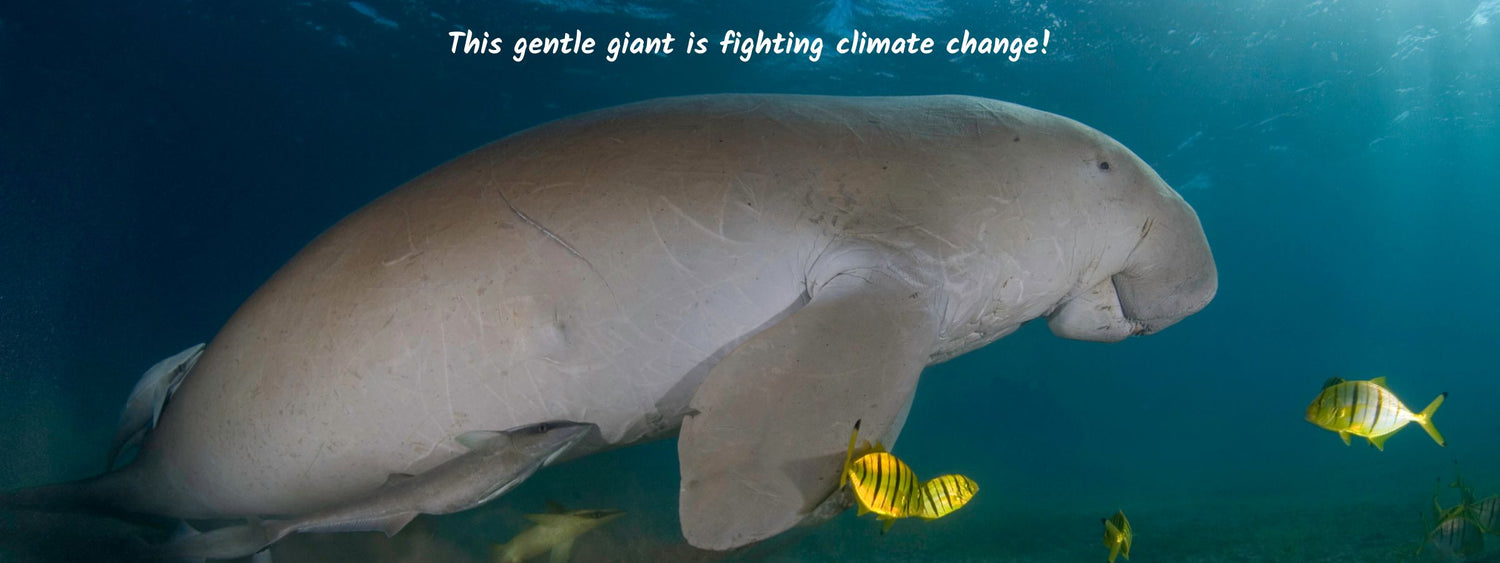Have you ever wondered what chemicals are hiding in your sunscreen?
Did you know that it is estimated that roughly 14,000 tons of sunscreen ends up in the oceans around the world every year! (I was certainly surprised by that figure.)
So it's important to know if the chemicals in the sunscreen you're using are contributing to this problem for marine life and corals.
And these chemicals don't only get into the ocean when you go swimming at the beach. It happens in other ways like wastewater run-off, and waterways feeding into the sea which are being used by crowds of people, also causing sunscreen to end up in the ocean.
So it won’t surprise you that there is now evidence that many chemical ingredients in your average sunscreen are having a negative affect on marine life and reefs.

Healthy oceans and reefs
Several studies have shown that two common ultraviolet filters - oxybenzone and octinoxate - may be causing the most detrimental effects.
Researchers have found that oxybenzone can have a major toxicological effect on plants and algae.
Algae, and sea grass, are such important contributors to the ocean. They provide food for fish, dugongs, and many other types of marine life.
Studies have found that octocrylene (another chemical) is bad news for fish, other marine life, as well as coral health.
More recently, studies have also shown that aerosol sunscreens can cause damage to marine life and coral due to overspray.
Using an aerosol spray often leads to over spraying and when the chemicals from the spray float to the sand, they can easily be washed into the ocean.
Here are some of the chemicals lurking in sunscreens:
According to research, the sunscreen ingredients oxybenzone, octinoxate, octisalate, octocrylene, homosalate and avobenzone are all systemically absorbed into the body after each use.
When you apply a sunscreen on yourself and your family, make sure it’s natural to avoid any issues these chemicals may have.
Other chemicals that are currently used and are still under investigation as to their safety include: avobenzone, cinoxate, dioxybenzone, ensulizole, homosalate, meradimate, octinoxate, octisalate, octocrylene, oxybenzone, padimate O, and sulisobenzone.
In recent years, many studies have also raised concerns about the hormone-disrupting effects of three specific ingredients: homosalate, avobenzone and oxybenzone.
The details of the effect of these chemicals are beyond the scope of this blog – so we encourage you to do a little ‘digging’ online if you are concerned about the chemical ingredients in your sunscreen migrating through the skin.
Places that have already banned chemical sunscreens
Some well known tourist spots, like Hawaii and Paulau, have now banned sunscreen containing certain chemicals.

Hawaii has banned chemical sunscreens
Hawaii was the first place in the world to ban “the sale, offer of sale, and distribution” of sunscreens that contain the chemicals oxybenzone and octinoxate.
Other places that have banned ingredients in sunscreen include The US Virgin Islands – who have banned oxybenzone, octinoxate, and octocrylene in sunscreens.
And Palau, an island close to Indonesia and Papua New Guinea – which is a popular site for divers and snorkelers - banned 10 ingredients in sunscreens from 1 Jan 2020. 🐟
Here’s 4 ideas to help the reef – and help you and your family avoid becoming sunburnt

1. Choose mineral-based sunscreen that contains natural zinc oxide or titanium dioxide.
BUT NOT natural sunscreen with nano-size particles that may be ingested by corals and marine life.
Researchers have found that nano-sized particles also settle on live coral in reefs and block the coral's access to sunlight, causing them to become susceptible to diseases and bleaching.
2. 'Wear your sunscreen' – and save money too You can use up to approx. 90% less sunscreen by wearing rashie vests, tee shirts, or wet suits. All of these give you a natural form of UV protection.
Covering up with clothes will save you that money you would usually spend on extra sunscreen. And, of course, clothing is a long wearing alternative as well. Remember your hat wherever you are!
3. Find shady areas to sit and relax
On the beach, use a beach tent to make your own shade.
Choose shady spots for games and bring an umbrella as well.
If you’re swimming in a public pool, find some shade in the area where you can relax when you come out of the pool.

4. Remember the Aussie “Slip, Slop, Slap, Seek, Slide”
Slip on a t-shirt
Slop on natural zinc oxide or titanium dioxide sunscreen, with a protection factor of SPF30 or more
Slap on a wide brimmed hat
Seek shade from the sun wherever possible
Slide on some good quality wrap-around sunglasses
It’s an oldie but a goodie!
An important note about sun safety!
Australia has one of the highest rates of skin cancer in the world according to the Cancer Council.
To minimise the risk of developing skin cancer, they suggest multiple forms of protection from the sun – including using a sunscreen whenever UV levels are at 3 or above.
In Australia, we need to ensure that everyone is protected from the sun so please don’t stop using a sunscreen.
Simply choose a sunscreen that avoids nasty chemicals, and uses zinc oxide or titanium dioxide to block the damaging UV rays.
And very importantly, check it is also palm oil free.
The elephant (I mean, orangutan) in the room:
Most of us are aware with the issues regarding palm oil and how these are affecting orangutans.
The biggest problem for the orangutan is the destruction of their rainforest habitat – which is the orangutan's natural home – to grow palm oil plantations. This loss of rainforests is also contributing to climate change.
And it’s disastrous for the orangutans, who end up with no food to eat and no place to live.

Look after the orangutan's future!
Did you know that, ironically, the orangutan is protected, but its rainforest home is not? This is a sad situation for the remaining orangutans and their numbers are diminishing.
It’s also a very good reason NOT to purchase any products that contain palm oil. (Yes, I nearly dropped a pack of freshly baked doughnuts the other day – in my haste to put them back down – when I read that they had palm oil in them! I then noticed that many of the fresh bake supermarket biscuits also had palm oil included on their labels.)
Sorry to get distracted. 😀
If you’re curious about what names palm oil hides behind, please see the list below, at the end of this segment.
Be pro-active and decide not to support palm oil - including palm oil used in most sunscreens.

There is good news though!
Australia is the home of the first certified Palm Oil Free sunscreen – which is something to be very proud of.
Let me briefly share this company's story...
Aussie-made Sunbutter sunscreen was originally certified “palm oil free” by the Orangutan Alliance from 2019. 🌴
But then, one of their suppliers changed. And, because international supply chains are very hard to investigate, unfortunately even the supplier could no longer be certain that an ingredient – called Coco-caprylate/Caprate – was not derived from palm oil.
Somewhere along the way in the production of their sunscreen there was a risk that a palm oil version of the Coco-caprylate/Caprate may have snuck in..
So, Sunbutter started a long and complex POFCAP Palm Oil Free Certification to ensure their sunscreen was definitely palm oil free. As a result, Sunbutter is now CERTIFIED Palm Oil Free.
They are the 1st sunscreen in the world to be CERTIFIED Palm Oil Free.
An amazing milestone for Australia!
By the way, as promised above, if you’re interested here's that list of some of the names that are used to disguise palm oil in products:
Vegetable Oil; Vegetable Fat; Palmate; Palmitate; Palmolein; Palm Kernel; Palm Kernel Oil; Palm Fruit Oil; Glyceryl; Stearate; Stearic Acid; Palmitic Acid; Elaeis Guineensis; Palmitoyl Oxostearamide; Palm Stearine; Sodium Laureth Sulfate; Sodium Lauryl Sulfate; Sodium Kernelate; Sodium Palm Kernelate; Palmitoyl Tetrapeptide-3; Hydrate Palm Glycerides; Etyl Palmidite; Octyl Palmitate; Palmityl Alcohol; Sodium Lauryl Lactylate/Suphate and Coco-caprylate/Caprate.
THERE IS LIGHT AT THE END OF THE TUNNEL… as the saying goes
As you’re probably aware, I’m always searching for answers – to find info about exciting new developments that will help our planet heal.
So I’m very happy to share that sustainable alternatives to palm oil have been already been discovered.
Here’s a couple of the latest developments in the search to find an answer to replacing palm oil with an environmentally friendly alternative.
Scientists from Singapore's Nanyang Technological University and Malaysia's University of Malay chose a micro algae for the answer to an alternative to palm oil.
They have now developed a method to effectively produce and extract plant-based oils from a type of common micro algae.
As the oils produced from the micro algae are edible, and have superior properties to those found in palm oil, the newly discovered method could serve as a healthier and greener alternative to palm oil.
And food experts at Queen Margaret University (QMU), Edinburgh have developed a new ingredient which has the potential to replace palm oil in bakery products.
The new ingredient, which includes a by-product from the linseed industry, fibre, and rapeseed oil, can be produced locally but at a large scale, and is cost-competitive.
If used by the food industry to replace palm oil, it has the potential to significantly lower greenhouse gas emissions by reducing the impact of food miles, as well as reducing the deforestation of global rainforests associated with palm oil production.
It just shows that, once again, there are solutions being discovered all the time – for many of the issues linked to climate change.
Stay positive and we’ll update you on any new developments in a future blog. 😊
Looking for more info on Australian Sunbutter?
If you want a natural Aussie-made, Palm Oil Free, SPF50 sunscreen suitable for the whole family – click here for more details. It ticks all the boxes and is made for Australian conditions by an Australian business.
Please note: This blog is general in nature and does not offer medical advice.
We suggest that you take the time to personally investigate information on chemicals used in sunscreens further, if you need more specific information on this topic.
This blog will be here to re-visit, share and (I hope) inspire for the future.
Remember to bookmark this post so you can come back to it at any time. 😊 Thanks.
And if you enjoyed this blog, please help us share it - by leaving a comment to let others know about our Twizzle Designs Earth-friendly blog.
Twizzle Designs offers truly eco-friendly, Australian made, sustainable gifts for your friends and family.
We also donate to 💚 Planting trees 💚 Supporting conservation of Australian native wildlife, and 💚 Helping to save our planet by donating to environmentally aware charities. Because these are the things that are super important to us. 😊





